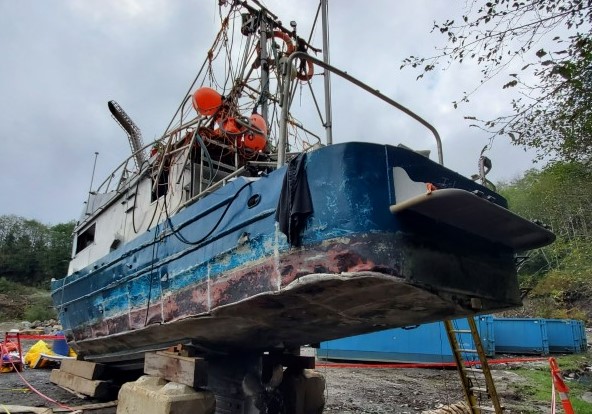Capsizing and subsequent sinking
Passenger vessel Island Bay
Carpenter Bay, Haida Gwaii, British Columbia
The occurrence
On 10 September 2022, the Island Bay was on an ecotour with 2 crew members and 5 passengers on board when the crew reported that the vessel was taking on water. The crew and passengers subsequently abandoned the vessel in Carpenter Bay, Haida Gwaii, British Columbia. During the abandonment, 1 passenger was washed away and was rescued. Crew and passengers evacuated to the shore in Carpenter Bay with the vessel’s rigid hull inflatable boat. The Island Bay capsized, partially sank, and drifted aground. The crew and passengers were rescued from the shore that afternoon. The vessel was later salvaged and transported to Prince Rupert, British Columbia.
Investigation information
Download high-resolution photos from the TSB Flickr page.
Class of investigation
This is a class 3 investigation. These investigations analyze a small number of safety issues, and may result in recommendations. Class 3 investigations are generally completed within 450 days. For more information, see the Policy on Occurrence Classification.
TSB investigation process
There are 3 phases to a TSB investigation
- Field phase: a team of investigators examines the occurrence site and wreckage, interviews witnesses and collects pertinent information.
- Examination and analysis phase: the TSB reviews pertinent records, tests components of the wreckage in the lab, determines the sequence of events and identifies safety deficiencies. When safety deficiencies are suspected or confirmed, the TSB advises the appropriate authority without waiting until publication of the final report.
- Report phase: a confidential draft report is approved by the Board and sent to persons and corporations who are directly concerned by the report. They then have the opportunity to dispute or correct information they believe to be incorrect. The Board considers all representations before approving the final report, which is subsequently released to the public.
For more information, see our Investigation process page.
The TSB is an independent agency that investigates air, marine, pipeline, and rail transportation occurrences. Its sole aim is the advancement of transportation safety. It is not the function of the Board to assign fault or determine civil or criminal liability.
